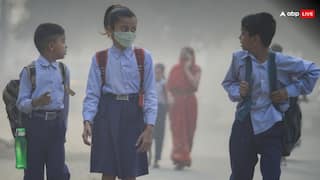Delhi AQI: Stubble Burning Declines In Parts Of Haryana And Punjab, Will Capital Breathe Easier This Year?
Stubble burning incidents in Haryana and Punjab have decreased since 2019. Despite the improvement, the total fire count remains high, affecting Delhi's air quality.

New Delhi, Oct 22 (PTI) Stubble burning incidents in Haryana and Punjab have decreased since last year, which may help improve Delhi’s air quality, according to a recent analysis by a Delhi-based policy outreach organisation.
Both states are pivotal regions linked to stubble burning, which has notably affected air quality in Delhi, especially during the post-monsoon season.
The analysis by Climate Trends indicates that fire counts in Haryana decreased from 14,122 in 2019 to 7,959 in 2023. In Punjab, fire incidents peaked in 2020 at 95,048 but dropped to 52,722 by 2023.
Districts such as Karnal and Kaithal witnessed remarkable decreases of approximately 86 per cent and 78 per cent, respectively. However, areas like Gurgaon, Mewat, and Jhajjhar experienced increases in fire incidents, the analysis reads.
The post-monsoon period remains the most fire-prone, with notable reductions observed in districts like Gurdaspur and Muktsar in Punjab, which saw decreases of up to 71 per cent.
However, some areas, including Amritsar and Sangrur, reported minimal changes, and a few places like Sahibzada Ajit Singh Nagar experienced slight increases in fire counts.
Aarti Khosla, the Director of Climate Trends, said, “The reduction in fire incidents across Punjab and Haryana presents a mixed trend. While some districts have made significant strides, the total fire count remains high.” The analysis highlights that Delhi’s air quality was adversely affected by these fire incidents. On days without fires, the city’s air quality index (AQI) averaged 175 (Moderate category).
However, during the stubble-burning season, this figure surged to 233 (Poor category), and when fire counts exceeded climatological averages, the AQI peaked at 337 (Very Poor category).
RN Padaria, Joint Director - Extension at the Indian Agriculture Research Institute, highlighted the increasing awareness among farmers regarding stubble burning management through integrated approaches, including the use of short-duration paddy varieties and appropriate farm machinery.
Sagnik Dey, Professor at the Centre for Atmospheric Sciences at IIT Delhi, said, “While farm fires have decreased, it’s important to address other sources contributing to Delhi’s year-round air quality issues.”
(This report has been published as part of the auto-generated syndicate wire feed. Apart from the headline, no editing has been done in the copy by ABP Live.)






































